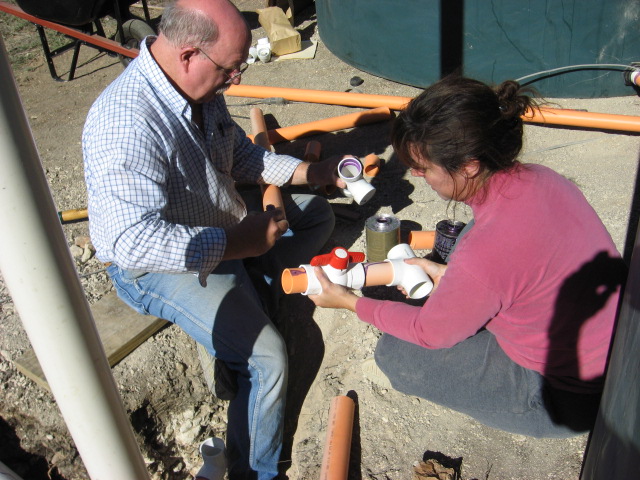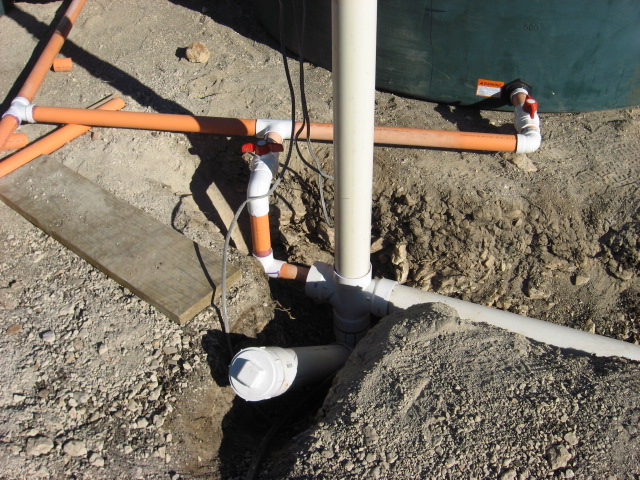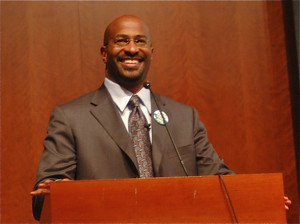 Texas Impact presents the Texas Energy Future keynote by Van Jones.
Texas Impact presents the Texas Energy Future keynote by Van Jones.
Texas Impact brings you audio and video from Van Jones' keynote speech at the Texas Energy Future conference held at the Texas Capitol on February 18, 2009.
Click here for audio of the keynote.
Click here to watch video from the keynote
A high-quality version of the video is also available. (Note: You can download the audio and video files to your computer by right clicking the links above and choosing "Save Link As..." from the menu.)
At the Texas Energy Future Conference on Wednesday, February 18th, bestselling author Van Jones addressed a crowd of 500 Texans at the state capitol with a message of green opportunity—opportunity for clean energy, new jobs, and hope for those on the margins of society.
Jones began by saying that our economy had been on the wrong track for the last 30 years. According to Jones, our “old economy” has broken down because it was founded upon the idea that we could build and sustain it based on:
1. Consumption rather than production;
2. Credit and debt rather than savings and thrift; and
3. Ecological destruction rather than ecological restoration and living in harmony with God’s creation.
He also said we’ve been operating under a false distinction that we can either protect the environment or have a good economy, but not both. According to Jones, though, “Everything that is good for the environment is a job.”
Our new economy, he said, must be based upon local production, thrift, and ecological restoration. By investing in wind and solar energy production, millions of jobs can be created. And by retrofitting our homes and businesses to make them more energy-efficient, we can cut our energy bills and carbon output by 30-40%, while creating more new jobs.
The challenge in building this new economy, Jones said, is to build a green economy for all people in Texas—not just a few: “We don’t have any throwaway species, throwaway resources, throwaway children, or throwaway neighborhoods…. Let's green the ghettos first.” By investing in job training among those on the margins of society, we will give people good jobs and prevent crime, which will lower prison populations. This strategy is both morally right and economically rational, for job training costs far less than incarceration does.
So let us work toward making this new, green economy, and let us make it one that works for all Texans. As people of faith, we must speak up for and stand with people who were on the margins of the old economy—to make sure that the new economy includes all people. For more information about Van Jones, green jobs, and the new green economy, visit www.greenforall.org.


 If future generations are to remember us more with gratitude than sorrow, we must achieve more than just the miracles of technology. We must also leave them a glimpse of the world as it was created, not just as it looked when we got through with it.
If future generations are to remember us more with gratitude than sorrow, we must achieve more than just the miracles of technology. We must also leave them a glimpse of the world as it was created, not just as it looked when we got through with it.
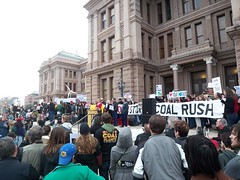
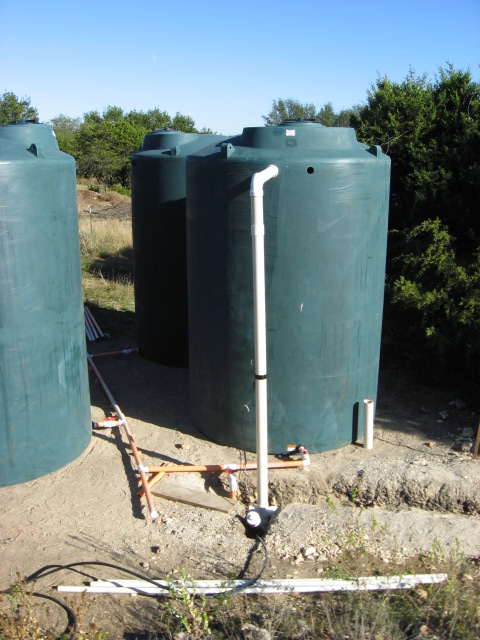 On November 8, 2008, the Rock United Methodist Church in Cedar Park, TX completed the plumbing of a rain water harvesting system that is ready to capture the rain water from the church's roof in three large storage tanks. Three inches of rainfall will yield about 15,000 gallons, enough to fill the tanks. Depending on how the rainfall is spread out over the year, the system should provide the capture and use of about 80,000 to 120,000 gallons of water per year, reducing consumption of the municipal water supply and the related energy, and providing non-chlorinated, calcium-free, neutral-pH water that is ideal for irrigation. It will also reduce storm water runoff and erosion from the church property.
On November 8, 2008, the Rock United Methodist Church in Cedar Park, TX completed the plumbing of a rain water harvesting system that is ready to capture the rain water from the church's roof in three large storage tanks. Three inches of rainfall will yield about 15,000 gallons, enough to fill the tanks. Depending on how the rainfall is spread out over the year, the system should provide the capture and use of about 80,000 to 120,000 gallons of water per year, reducing consumption of the municipal water supply and the related energy, and providing non-chlorinated, calcium-free, neutral-pH water that is ideal for irrigation. It will also reduce storm water runoff and erosion from the church property. 